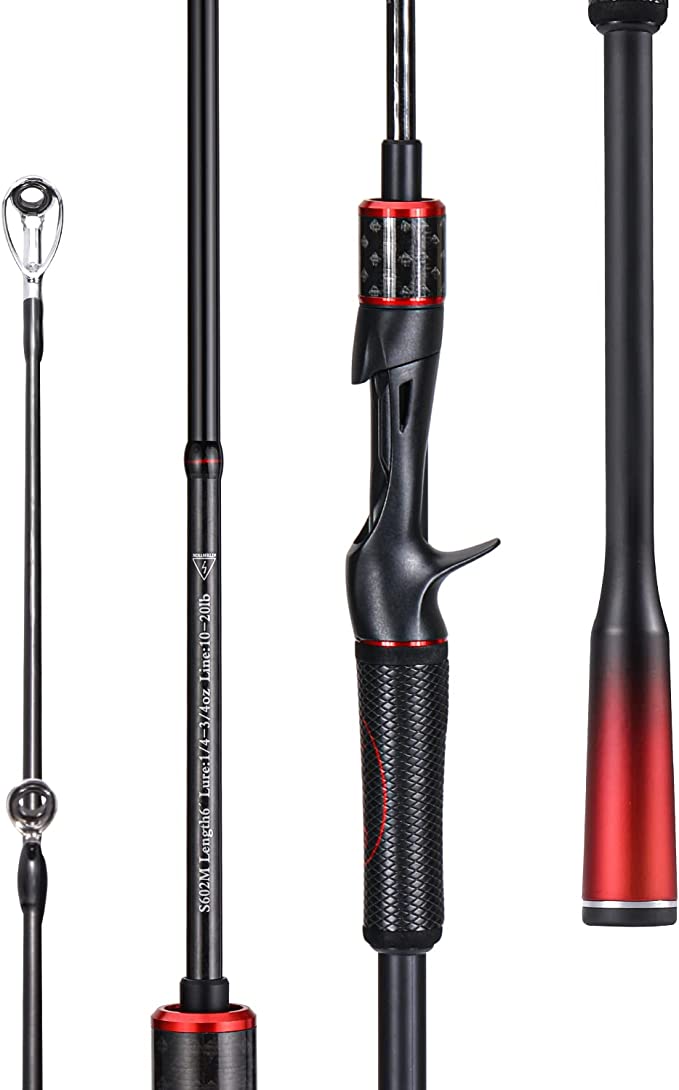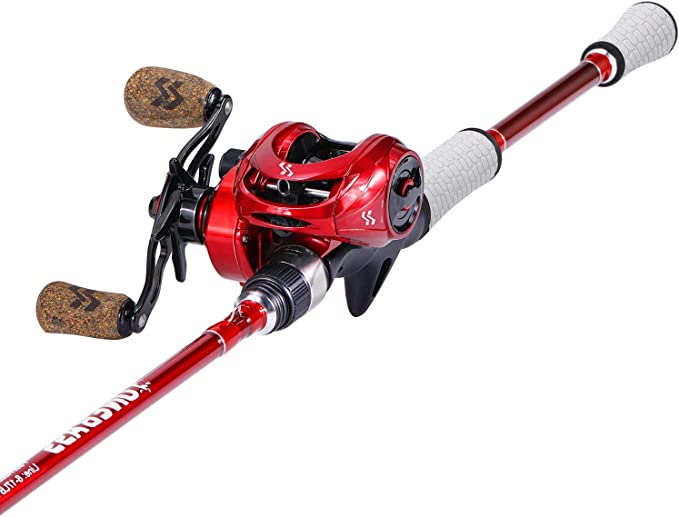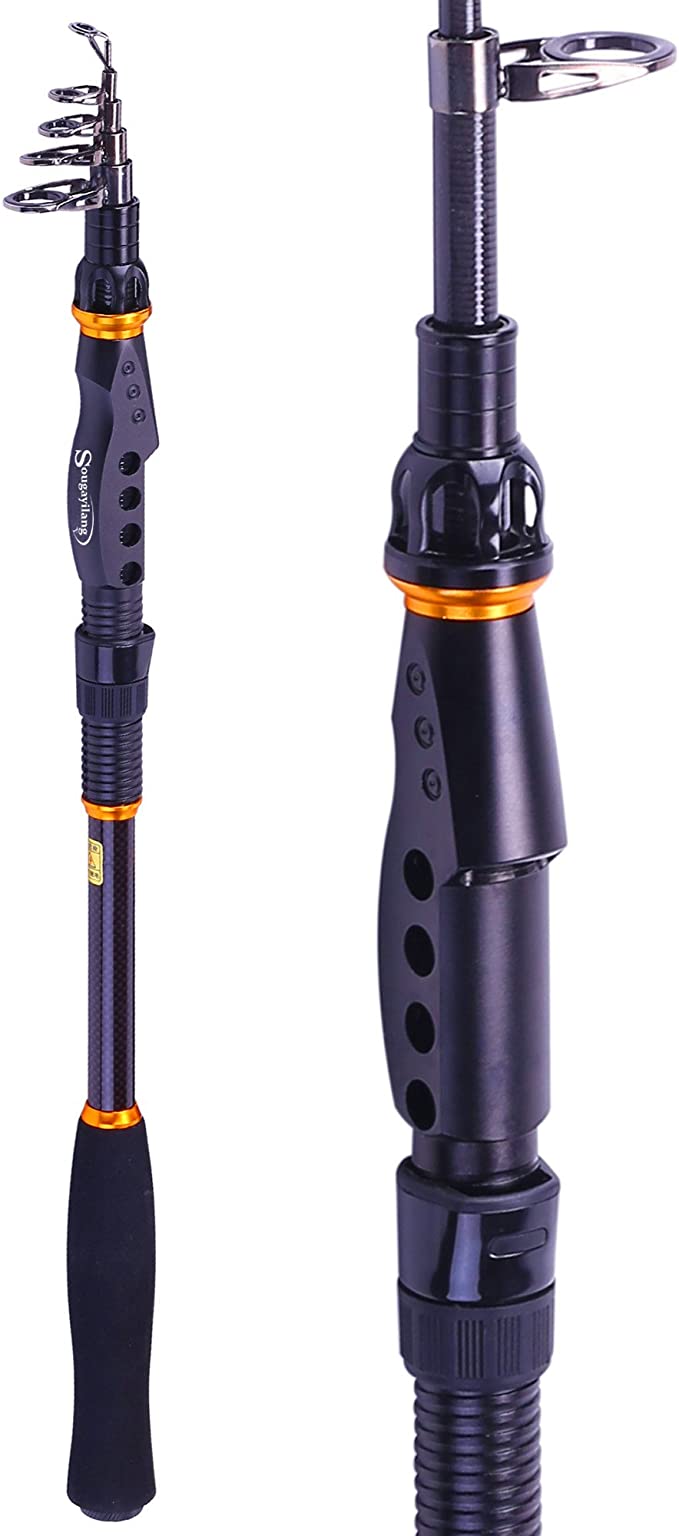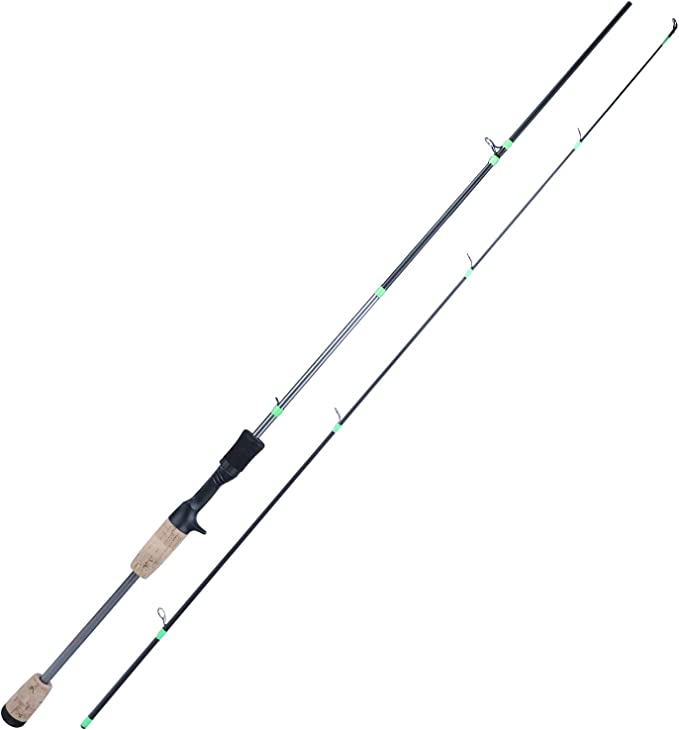The Pocket Rod Revolution: Unpacking the Science of the RICHCAT Travel Rod
Update on Aug. 1, 2025, 5:01 p.m.
Imagine a crystal-clear alpine lake shimmering beneath a snow-capped peak, miles from the nearest road. The air is crisp, the silence is profound, and a native trout rises to the surface. This is the moment you’ve hiked for, but it’s a moment that can only be seized if your fishing gear can make the journey with you. For too long, the angler’s dilemma has been a choice between a high-performance, cumbersome two-piece rod and a portable but often flimsy alternative. Today, the world of ultralight fishing is being redefined by a marvel of engineering: the telescopic rod.
The RICHCAT Travel Fishing Rod isn’t just a piece of gear; it’s a testament to a shift in design philosophy, where portability doesn’t have to come at the expense of performance. It’s a tool that promises to fit into a backpack, a suitcase, or even a motorcycle pannier, and then extend to become a formidable instrument on the water. To understand how it accomplishes this feat, we must look beyond the surface and delve into the science behind its construction.
The Physics of Portability: Engineering the Telescopic Advantage
The history of fishing rods is one of constant innovation, from the primitive branches of early anglers to the delicate, multi-piece bamboo rods of the past. But the telescopic design, where sections retract into one another, is a relatively modern triumph of engineering. The core challenge is simple: how do you create a series of interconnected hollow tubes that can bend and flex as one continuous unit?
The answer lies in the precision of the ferrule joints—the tapered connections between each section. Unlike a simple friction fit, these joints are engineered to seat tightly and securely, distributing stress evenly along the rod’s length. When fully extended, they create a bending curve that closely mimics the smooth, parabolic action of a traditional one-piece rod. This is what allows the RICHCAT’s 6-foot, seven-section design to compress down to a mere 15.8 inches (approximately 40 cm), a packable size that makes it a true pocket rod, ready for spontaneous adventure.
The Magic of Carbon Fiber: Strength-to-Weight, Sensitivity, and Beyond
If the telescopic structure is the skeleton of the rod, the material is its lifeblood. The RICHCAT rod is constructed from 100% carbon fiber, a material that has revolutionized not just fishing, but aerospace and competitive cycling as well. Carbon fiber’s defining characteristic is its extraordinary strength-to-weight ratio. Composed of thousands of tiny carbon filaments woven together and set in a polymer matrix, this composite material is significantly lighter than its fiberglass predecessors, yet far stronger.
This material science is what allows the rod to weigh a scant 3.8 ounces (107.73 grams) while maintaining the structural integrity to handle feisty fish. But the benefits extend beyond mere strength. Carbon fiber acts as an exceptional conductor of kinetic energy. The vibrations from a fish’s gentle “tap” on your lure travel from the tip of the rod, through the carbon blank, and directly to your hand. This heightened bite sensitivity gives the angler a crucial advantage, allowing them to feel even the most subtle strikes. This is a level of responsiveness that was once the exclusive domain of high-end, single-piece rods.
Defining Performance: The Science of “Fast Action”
Beyond its physical structure and materials, a rod’s character is defined by its action and power. The RICHCAT is described as having a Fast Action and Medium Power, and understanding these terms is key to appreciating its intended use.
Action refers to where a rod bends when under pressure. A “fast action” rod bends primarily in the top third of its blank. This design provides two key benefits: it offers the precision needed for accurate casting of lighter lures, and it allows for a powerful, quick hook set. When a fish bites, you can react instantly, driving the hook home with minimal effort. This makes it an ideal tool for fishing with finesse techniques, targeting a wide range of freshwater species from trout and panfish to bass.
Power, on the other hand, describes the rod’s lifting strength or resistance to bending. A “Medium Power” rod is a versatile choice, capable of handling a broad spectrum of fish sizes, which aligns with its specified line weight of 6-18 lbs and lure weight of 1/5-7/10 oz. It’s a sweet spot that offers the flexibility to enjoy the fight with a smaller trout while still having the backbone to land a larger bass without fear of the rod snapping.
Components and Context: The Sum of the Parts
No rod is complete without its supporting components. The lightweight graphite reel seat features a double-locking mechanism, a small but critical detail that prevents your reel from coming loose during a strenuous fight. The rod’s ceramic guides—a standard in modern rod building—are another testament to thoughtful design. Their smooth, polished surface is specifically chosen to reduce friction on the fishing line, ensuring longer, more accurate casts and protecting the line from heat buildup, a common problem with durable braided or fluorocarbon lines.
The true value of this engineering, however, is best understood not in a lab but on the trail. A verified customer review from a hiker in Glacier National Park, Montana, speaks volumes. The reviewer describes using the rod to catch a native westslope cutthroat trout in an alpine lake—a story that perfectly encapsulates the rod’s purpose. While another review mentions a guide falling off, it’s a reminder that even well-engineered, mass-produced items can have a trade-off in manufacturing consistency. It’s an honest, objective observation that professional anglers and backpackers appreciate.
Ultimately, the RICHCAT telescopic rod is more than just a convenient tool. It is a fusion of advanced material science, clever mechanical engineering, and a deep understanding of the angler’s desire for freedom. It represents a new era of fishing, one where a full-size rod can truly be “at the ready” wherever your travels may take you. It’s a reminder that with the right technology, the most remote and beautiful fishing spots are no longer out of reach.







































